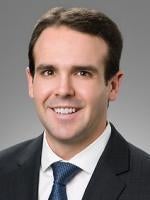In a prior article, we explained Senate Bill 95, which requires employers with more than 25 employees in California to provide COVID-19 Supplemental Paid Sick leave. You can read it here. SB 95 creates California Labor Code Sections 248.2 and 248.3. It goes into effect on March 29, 2021, and applies retroactively to January 1, 2021. This new COVID-19 Supplemental Paid Sick Leave law allows covered employees to take up to an additional 80 hours of paid COVID-19 related sick leave.
The Labor Commissioner recently posted a frequently asked questions list addressing SB 95. It also provided this poster, which all employers with 25 or more employees must display in a conspicuous place in the workplace, or must disseminate to the workforce through electronic means if employees are telecommuting and do not physically report to work. This blog highlights the FAQs employers are most likely interested in. Because this new legislation will go into effect on March 29, 2021, and is set to expire September 30, 2021, time is of the essence. Employers should seek legal advice as soon as possible to ensure compliance with this legislation.
Which employers are covered by SB 95?
All public or private employers with more than 25 employees are covered.
Which employees are covered?
An employee who works for a covered employer is entitled to COVID-19 Supplemental Paid Sick Leave if the employee cannot work or telework due to a COVID-19 related reason.
What are the reasons an employee may take COVID-19 Supplemental Paid Sick Leave?
There are three main categories of reasons: (1) caring for oneself; (2) caring for a family member; and (3) a vaccine-related absence.
(1) Caring for oneself. An employee is entitled to COVID-19 Supplemental Paid Sick Leave if the employee is unable to work or telework because the employee is subject to a quarantine or isolation period related to COVID-19, has been advised by a healthcare provider to quarantine due to COVID-19, or is experiencing symptoms and is seeking a medical diagnosis.
(2) Caring for a family member. An employee is entitled to COVID-19 Supplemental Paid Sick Leave if the employee is unable to work or telework because the employee is caring for a family member who is subject to a quarantine or isolation period related to COVID-19, or the employee is caring for a child whose school or daycare is closed or unavailable due to COVID-19.
(3) Vaccine. An employee is entitled to COVID-19 Supplemental Paid Sick Leave if the employee is unable to work or telework because the employee is attending a vaccine appointment, or is experiencing vaccine-related symptoms.
Being subject to a general stay-at-home order does not qualify an employee for COVID-19 Supplemental Paid Sick Leave. Rather, quarantines and isolation periods must meet the definition or guidelines set forth by the California Department of Public Health, the federal Centers for Disease Control and Prevention, or a local health office who has jurisdiction over the workplace.
What time period does SB 95 cover?
January 1, 2021 through September 30, 2021. As explained below, beginning on March 29, the requirement to provide COVID-19 Supplemental Paid Sick Leave reaches back to January 1, 2021, which means that covered employees who took qualifying leave between January 1, 2021 and March 28, 2021, may request retroactive payment for that leave if it was not paid by the employer in the amount that is required under SB 95.
When is an employer required to begin paying COVID-19 Supplemental Paid Sick Leave?
The law goes into effect on March 29, 2021. Employers must begin providing payment for this specific sick leave no later than the payday for the next regular payroll period. Therefore, some employers will need to be ready to pay COVID-19 Supplemental Paid Sick Leave by the first full week of April 2021.
When does an employer have to make COVID-19 Supplemental Paid Sick Leave available to an employee?
Leave must be provided to a covered employee upon an oral or written request.
Can an employer require a medical certification prior to granting a request for COVID-19 Supplemental Paid Sick Leave?
No. The leave is not dependent upon a medical certification. However, in some circumstances, it may be reasonable to ask for documentation before paying the “sick” employee if the employer has other information indicating that the employee is not requesting COVID-19 Supplemental Paid Sick Leave for a valid reason.
When and how may an employee request retroactive payment of COVID-19 Supplemental Paid Sick Leave?
If a covered employee took a COVID-19 related leave on or after January 1, 2021, for one of the qualifying reasons above, but was not paid the amount required by SB 95, the employee has the right to ask for a retroactive payment equal to the paid sick leave amount required under the new law. The employer’s obligation to pay this amount does not go into effect until March 29, 2021. Thus, the employee must make an oral or written request for retroactive payment on or after March 29, 2021. A request before March 29 does not count.
After the employee makes the request, the employer will have until the payday for the next full pay period to pay the retroactive COVID-19 Supplemental Paid Sick Leave amount owed. For example, if an eligible employee took three hours off work in February 2021 to attend a vaccine appointment, the employee may make an oral or written request for three hours of retroactive paid leave.
What is the maximum amount of COVID-19 Supplemental Paid Sick Leave under SB 95?
The maximum amount of paid leave is 80 hours.
Is COVID-19 Supplemental Paid Sick Leave calculated differently for full-time and part-time employees?
Yes. A covered employee who is considered full-time, or who worked or was scheduled to work an average of 40 hours or more in the two weeks preceding a COVID-19 related leave is entitled to 80 hours of paid leave.
If a part-time covered employee works a variable schedule, there is a formula for calculating the employee’s number of hours of leave. For example, the average number of hours the employee worked for the employer each day during the prior six months is multiplied by 14 to determine the number of hours attributable to the employee’s COVID-19 Supplemental Paid Sick Leave.
How much is a covered employee paid for the COVID-19 Supplemental Paid Sick Leave?
For exempt employees, COVID-19 Supplemental Paid Sick Leave is calculated in the same manner that the employer calculates other forms of paid leave time.
For non-exempt employees, COVID-19 Supplemental Paid Sick Leave is paid at the HIGHEST of the following:
- The employee’s regular rate of pay for the workweek in which the leave is taken
- A rate calculated by dividing the employee’s total wages, not including overtime premium pay, by the employee’s total hours worked in the full pay periods of the prior 90 days of employment
- The State minimum wage
- The local minimum wage
***MAXIMUM AMOUNT ALERT*** An employer is not required to pay more than $511 per day and $5,110 in total to a covered employee specifically for COVID-19 Supplemental Paid Sick Leave. However, an employee may utilize other types of paid leave after the employee reaches the maximum amount.
Does a retroactive payment of COVID-19 Supplemental Paid Sick Leave count as a credit toward the maximum amount?
Yes. The retroactive payment must be for a leave between January 1, 2021 and March 28, 2021, the leave must have been for a qualifying reason above, and the retroactive payment must be made at the correct rate described above.
What if the employer previously paid another supplemental benefit for COVID-19 related sick leave before the effective date of SB 95, may the employer receive a credit toward COVID-19 Supplemental Paid Sick Leave as well?
Yes, but this is more complex. For an employer to receive a credit, the employee’s leave must have been for a qualifying reason. Further, the employer must not have required the employee to use any other type of paid time off or vacation time. In addition, the employer must have paid the legally required rate (i.e., the highest rate) described above. If the rate paid was lower than the legally required rate, the employer may voluntarily retroactively pay the difference to the employee to receive a credit. If an employee makes an oral or written request for such a “catchup” payment, the employer must make the payment in the next pay period. Essentially, the employee must be paid the difference as if the prior paid leave had been treated as COVID-19 Supplemental Paid Sick Leave.
What if a local law requires COVID-19 related paid sick leave be paid at a different rate?
The employer must pay the sick pay at whichever rate is higher to ensure compliance with both state and local law.
How should COVID-19 Supplemental Paid Sick Leave be denoted on a wage statement or separate statement?
COVID-19 Supplemental Paid Sick Leave must be set forth as a separate line item on either the employee’s itemized wage statement, or the separate writing provided to the employee to comply with California’s sick pay law.
Conclusion
All employers in California with more than 25 employees nationwide should review SB 95 and analyze its impact upon the employer’s supplemental paid sick leave requirements. Because this new legislation will go into effect on March 29, 2021, and is set to expire September 30, 2021, time is of the essence. Employers should seek legal advice as soon as possible in connection with this legislation.
The legal landscape continues to evolve quickly and there is a lack of clear-cut authority or bright line rules on implementation. This article is not intended to be an unequivocal, one-size fits all guidance, but instead represents our interpretation of where applicable law currently and generally stands. This article does not address the potential impacts of the numerous other local, state and federal orders that have been issued in response to the COVID-19 pandemic, including, without limitation, potential liability should an employee become ill, requirements regarding family leave, sick pay and other issues.




 />i
/>i
